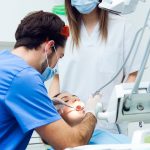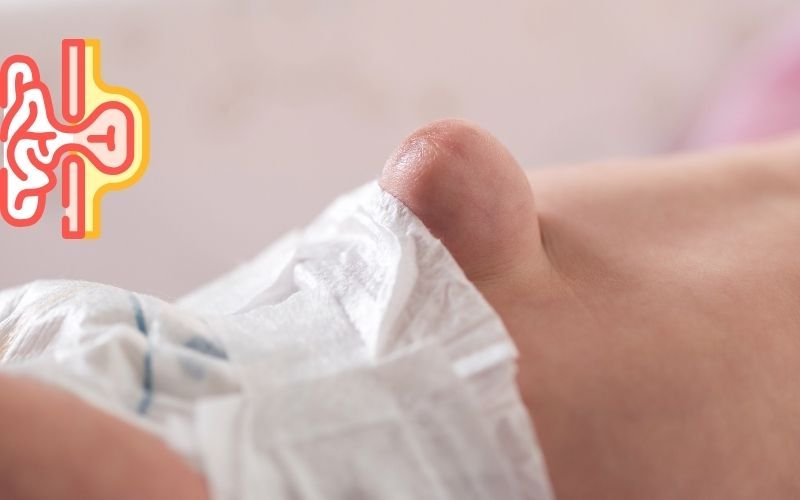A hernia occurs when any organ or tissue bulges out through a muscle or connective tissue. The bulge might lead to embarrassment, pain, and severe consequences on health in case of non-correction. Hernias can occur in both men and women, but the type and the location may be different.
Heritage meaning in Hindi is usually called अंत:व्रण or आंत बाहर निकलना, which indicates a sort of pushing of an internal organ through a loose opening. Managing the condition early will be through understanding the types, causes and treatment of the condition.
Not all hernias pose a significant health risk, though there are other types of hernias which are potentially dangerous, such as an incarcerated hernia. It is important to understand when to do it. Hernia surgery in Delhi is done in a safe way, and most of the hernias can be treated and have a short recovery period.
Common Causes of Hernia in Males and Females
The root causes of hernia can differ based on body structure, lifestyle, and health background.
Causes of hernia in males often include:
- Heavy lifting without support
- Straining during bowel movements
- Chronic coughing
- Injury or previous surgery
- Weak abdominal wall from birth
Men are more likely to develop inguinal hernias because their groin area has a natural opening where hernias can form.
Causes of hernia in females may be linked to:
- Pregnancy and childbirth
- Abdominal surgeries
- Chronic constipation
- Obesity
- Pelvic floor weakness
Women may face femoral or umbilical hernias more often than men, especially after childbirth.
Inguinal Hernia: Most Common in Men
Inguinal hernias appear in the groin area. They occur when tissue pushes through a weak spot in the lower abdominal muscles. There are two types: direct hernia vs indirect hernia.
- A direct hernia occurs through a weak spot in the abdominal wall and usually affects older men.
- An indirect hernia passes through the inguinal canal and is more common in younger men or children.
Inguinal hernias often feel like a lump and may hurt during lifting or coughing. Doctors usually suggest a hernia operation if the bulge grows or becomes painful.
Femoral Hernia: More Common in Women
Femoral hernias appear just below the groin in the upper thigh. These are less common but mostly affect women due to the shape of the female pelvis.
Symptoms include:
- Discomfort near the thigh
- Nausea or vomiting
- A visible lump near the upper leg
Femoral hernias carry a higher risk of strangulation, where the tissue’s blood supply is cut off. Immediate surgery is often needed.
Umbilical Hernia: A Central Abdominal Issue
An umbilical hernia occurs when part of the intestine pushes through the abdominal wall near the belly button. This is more common in infants, but adults can also get it, especially women after multiple pregnancies.
Symptoms include:
- A bulge near the navel
- Pain while coughing or bending
- Swelling that grows over time
Umbilical hernias in adults usually need surgery to avoid complications.
Incisional Hernia: A Post-Surgery Problem
An incisional hernia develops at the site of a previous surgical cut. It happens when the muscles around the incision don’t heal properly. These hernias are often seen in people who had major abdominal surgeries.
They can occur months or even years after the initial operation. Risks increase with obesity, infection, or poor wound healing.
Treatment often involves mesh repair during hernia surgery in Delhi, where surgeons strengthen the area with surgical mesh.
Spigelian Hernia: A Rare But Serious Form
A spigelian hernia occurs along the side of the abdominal wall, through a layer of muscle known as the spigelian fascia. It’s harder to detect because it does not always form a visible lump.
Symptoms include:
- Pain while moving
- Nausea and bloating
- Mild swelling at the side of the abdomen
Because of its hidden nature, this type is often diagnosed through ultrasound or CT scan. It needs early repair to avoid strangulation.
Bochdalek Hernia: Congenital Type in Infants
A bochdalek hernia is a birth defect where organs like the intestines move into the chest through an opening in the diaphragm. It’s diagnosed in newborns and can affect lung development.
Signs in infants include:
- Difficulty breathing
- Rapid heartbeat
- Bluish skin (cyanosis)
Surgery is done soon after birth to correct the defect and allow proper lung growth. Though rare in adults, late-onset bochdalek hernias can occur and may present with abdominal pain or chest discomfort.
Sports Hernia: Strain in Athletes
A sports hernia is different from traditional hernias. It is not a visible bulge but a soft tissue injury in the groin area caused by sudden movements, twisting, or overuse.
It mainly affects:
- Athletes who play football, hockey, or tennis
- Gym-goers with poor form during lifting
- Runners or cyclists with repetitive strain
Treatment usually begins with rest, physical therapy, and anti-inflammatory medicine. If the pain doesn’t go away, surgical repair may be required.
Abdominal Hernia: Symptoms and Treatment in Delhi
An abdominal hernia happens when an internal organ pushes through a weak spot in the abdominal wall. This is one of the most common hernias seen in both men and women. It may appear around the belly button, lower abdomen, or even near the groin.
Symptoms may include:
- A soft bulge that disappears when lying down
- Discomfort while bending or lifting
- Pressure or heaviness in the abdomen
- Pain that worsens with strain or cough
Treatment for abdominal hernia varies. Smaller hernias may be observed, but most require surgical repair. In advanced centers offering hernia surgery in Delhi, laparoscopic surgery procedures are used for faster healing and fewer scars.
When Hernia Becomes serious or a Medical Emergency
Some hernias may not cause much trouble, but others turn life-threatening when they get stuck or lose blood supply.
Two conditions that require urgent care include:
- Incarcerated hernia: The hernia gets trapped and cannot go back into place.
- Strangulated hernia: Blood flow to the herniated tissue is cut off, leading to tissue death.
Warning signs:
- Severe pain at the hernia site
- Nausea and vomiting
- Red or dark-colored bulge
- Fever and rapid heartbeat
Surgery is done immediately to save the tissue and avoid infection. Delaying care can result in bowel damage or sepsis.
Types of Hernia Disease in Women: Unique Considerations
Women experience hernias differently than men due to differences in body structure, hormones, and childbirth history.
Common hernias in women:
- Femoral hernia: Common after childbirth or obesity
- Umbilical hernia: Seen in pregnant or postpartum women
- Spigelian hernia: Less visible but painful
- Incisional hernia: After cesarean or abdominal surgery
Some hernias in women may be misdiagnosed as pelvic pain or ovarian problems. It’s important to consult a hernia specialist who understands female anatomy.
Recovery After Hernia Operation: What to Expect
Modern hernia surgeries use minimally invasive techniques, leading to faster recovery. Most patients return home within a day. However, healing still needs care.
Post-operative guidelines:
- Avoid lifting anything heavy for 4–6 weeks
- Follow a light, high-fiber diet
- Wear abdominal support if advised
- Resume normal activities gradually
- Keep the incision clean and dry
Pain and swelling are normal after surgery, but these reduce within a week. Follow-up visits with your doctor ensure the area heals well.
Hospitals offering hernia surgery in Delhi provide patient-specific recovery plans. Some also offer same-day discharge for laparoscopic hernia repairs.
Primus Hospital stands out as a trusted center for diagnosing and treating all types of hernia disease. With skilled surgeons, modern tools, and customized care, the hospital ensures safe outcomes for both men and women.
From managing rare types like bochdalek hernia to repairing common forms like abdominal hernia or sports hernia, Primus delivers expert solutions. Our team uses high-quality hernia kits, performs both open and laparoscopic procedures, and supports fast recovery.
For patients needing safe, modern, and affordable hernia surgery in Delhi, Primus Hospital offers care with precision. Whether you face a recent diagnosis or want a second opinion, their team is ready to help.
Early diagnosis and timely surgery reduce complications. With Primus Hospital, you get clarity, care, and confidence at every step.
FAQs
A direct hernia pushes through a weak spot in the muscle wall, usually in older men. An indirect hernia follows the inguinal canal and is more common in youth or newborns.
Small hernias may not grow, but they rarely heal on their own. Most hernias eventually need surgery, especially if symptoms worsen.
Unlike regular hernias, sports hernia doesn’t create a bulge. It causes groin pain, especially during movement. It needs rest or surgery if pain continues.
Avoid heavy lifting, eat fiber-rich foods, stay active, and manage your weight. If you had previous surgery, follow post-op care to reduce the chance of incisional hernia.
Pain is mild to moderate and usually managed with painkillers. Laparoscopic surgery causes less pain and helps in quicker recovery.
A hernia that becomes hard, painful, or causes nausea may be incarcerated or strangulated. Visit a hospital without delay.
Yes, especially umbilical and femoral hernias. Pregnancy weakens the abdominal wall, making hernias more likely. Proper diagnosis and treatment are key.













